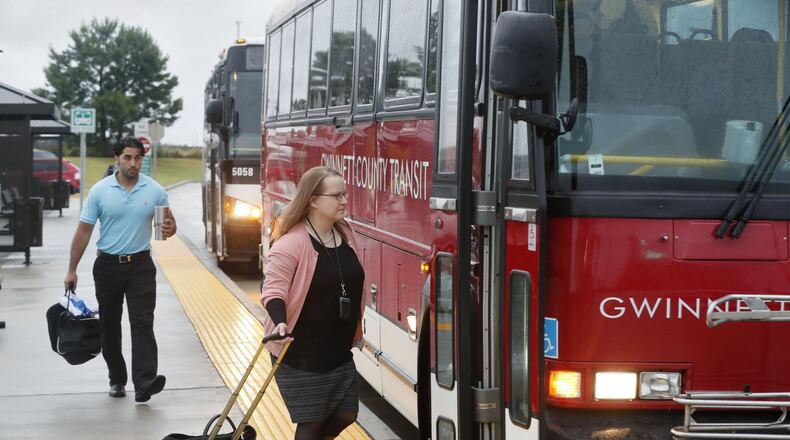For one student, it’s the time spent walking an hour each way to campus. For another without a reliable ride, it’s the stress and expense of getting to class for a big exam.
As a success coach who helps college students solve problems that could prevent them from graduating, Breale Howard has seen how transportation challenges can derail plans. Through her job with the need-based scholarship organization Achieve Atlanta, she’s worked with students to get MARTA cards or emergency grants to pay for transportation to work and school.
New research released exclusively to The Atlanta Journal-Constitution by the Civic Mapping Initiative found that only 28% of Georgia’s 140 community and technical college campuses are within walking distance, or less than half a mile as the crow flies, of a public transit stop.
”There’s a trope that I have used and heard,” said Abigail Seldin, the public policy project’s co-founder. “Our students are one flat tire from dropping out.”
Advocates who want to ensure more students graduate from college are zeroing in on transportation as one barrier to remove. Most community college students live off-campus. In 2021-2022, students attending two-year public colleges spent an average of $1,840 on transportation, according to a national report by the College Board.
The Civic Mapping Initiative is charting the proximity of community colleges to public transit across the nation. Seldin said they wanted to learn more about how “higher education and infrastructure intersect,” knowing that getting to campus is a key part of succeeding in college. But they couldn’t find any statewide or national surveys that detailed transit access to community colleges. So in 2021, they began making their own maps.
They found that nearly 58% of Georgia’s public, two-year-or-less college campuses are in rural areas, purposefully placed to serve students who live far from big cities and have no nearby transit stops.
Seldin, however, is focused on the remaining 14% of campuses across the state that are less than 5 miles from an existing transit line but not linked. Those are the locations where she said there’s potential to connect campuses to bus or other transit routes by adding another stop.
“It’s 14%, these 20 campuses, that represent a good opportunity for the state to invest in training its workforce and advancing higher education attainment goals,” she said.
Those include sites in the outskirts of metro Atlanta, including in Cherokee, Douglas and Forsyth counties. The map also pinpoints the potential for transit connections to campuses in LaGrange, Rome, Statesboro, Tifton and Valdosta.
The researchers included main campuses as well as branch and satellite sites for colleges within the Technical College System of Georgia and several within the University System of Georgia.
Mark Peevy, the Technical College System’s assistant commissioner of external affairs and facilities, said the agency plans to share the map with its schools. Colleges may be able to partner with local transit providers to expand routes.
“Add one more stop that can be closer, that can be a game changer for folks,” he said.
Peevy also pointed to other solutions, such as “last-mile” funds that are raised through donations to pay for students’ transportation, child care and other costs.
The expansion of online courses during the COVID-19 pandemic also assisted those who can’t easily get to campus. The number of virtual classes offered by the state’s technical colleges has grown by nearly 300% in recent years, he said.
Many students are balancing school with work and family. And when they do need to be on campus, finding a way there can be a struggle.
“Access to our campuses and ability to get there is really important,” said Peevy.
About the Author
Keep Reading
The Latest
Featured


